Bollywood
Lata Mangeshkar, the ageless voice of India, passes away at 92
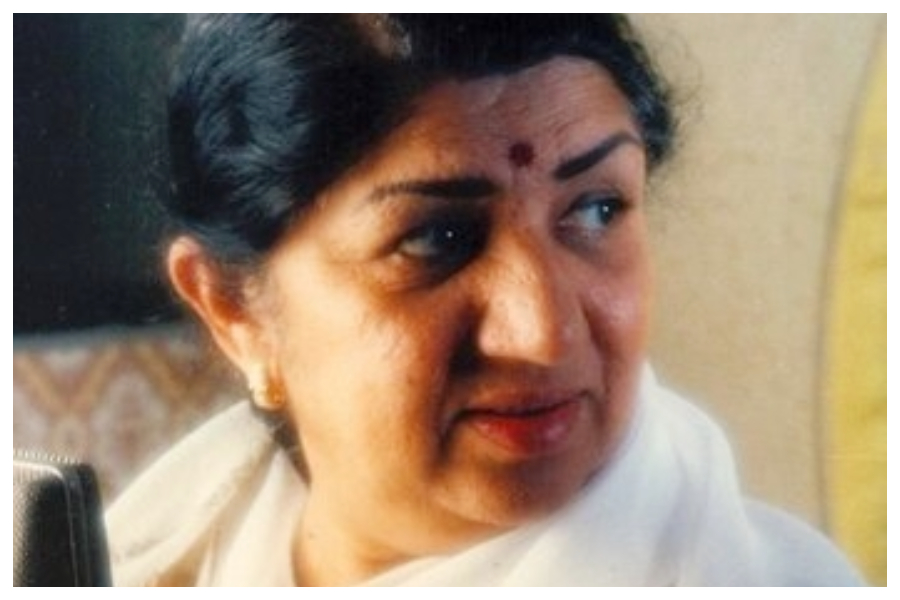
Lata Mangeshkar, India’s most loved singer who had once moved Pandit Jawaharlal Nehru to tears, leaves behind a teary-eyed nation of admirers who grew up listening to her immutable voice give wings to the words of poets and the screen careers of legions of heroines.
India’s Melody Queen, who also composed music for Marathi films and was a producer as well, and had the distinction of being conferred with the highest civilian honours of India and France, passed away on Sunday morning at the Breach Candy Hospital in Mumbai, where she had been admitted because of Covid-related complications on January 11.
Lata Didi, as she was known among her family and followers, was 92 and is survived by her siblings — playback singer and composer Meena Khadilkar, popular singer and restaurateur Asha Bhosale, singer Usha Mangeshkar, and music director Hridayanath Mangeshkar.
She never married, but was close to the late Raj Singh Dungarpur, the aristocratic former cricketer and President of the Board of Control for Cricket in India (BCCI) from 1996 to 1999.
One of India’s most loved voices, Lata Mangeshkar was the recipient of three National Film Awards, seven Filmfare awards, and of course, the Dadasaheb Phalke Award in 1989. She was conferred the Bharat Ratna in 2001, becoming the second singer after M.S. Subbulakshmi to be so honoured, and the French awarded her the Officer of the Legion of Honour.
In 1974, Lata Mangeshkar became the first Indian to perform at the Royal Albert Hall, London. She had indeed come a long, long way since the time when the first song that she recorded for a film — ‘Kiti Hasaal’ in 1942 — was dropped in the final cut.
Born in what was then the princely state of Indore on September 28, 1929, to the classical singer, Marathi theatre actor and writer of musical plays Deenanath Mangeshkar and his wife Shevanti (Shudhamati), Lata Mangeshkar was originally named Hema by her parents, but they later changed it to Lata after the character Latika from one of her father’s musical plays.
Lata Mangeshkar’s association with the performing arts began when she was five and started appearing in her father’s musical plays, and it continued even after her father’s premature death in 1942, thanks to his good friend, the actor and director Master Vinayak (Vinayak Damodar Karnataki), who took the family under his wings.
It was Master Vinayak who took Lata Mangeshkar to Mumbai, paved her way into the world of Marathi cinema, got her to take Hindustani classical music lessons from Ustad Aman Ali Khan of the Bhendi Bazaar Gharana, and introduced her to Vasant Desai, V. Shantaram’s favourite music composer.
But it was not until Master Vinayak’s death in 1948 that the struggling singer-actor found the person whom she considered to be her “godfather” — the music composer Ghulam Haider, who gave Lata Mangeshkar her first big break with the song ‘Dil Mera Toda, Mujhe Kahin Ka Na Chhora’ in the movie ‘Majboor’ (1948). It was her first big break.
Haider took his protege to Shashadhar Mukherjee, the Filmistan boss now better known as Kajol and Rani Mukherjee’s grandfather, for his film, ‘Shaheed’ (1948), but he turned her down because he found her voice to be “too thin”.
Lata Mangeshkar proved him oh-so wrong just a year later when her song ‘Aayega Aanewaala’, filmed on the gorgeous Madhubala in Kamal Amrohi’s debut directorial, ‘Mahal’ (1949), became an ageless hit.
And in one of life’s delicious ironies, Mukherjee’s grand-daughter lip-synced the ‘Dilwale Dulhania Le Jayenge’ song, ‘Mere Khwabon Mein’, which was sung by none other than Lata Mangeshkar, as well as the other numbers picturised on her and Shah Rukh Khan.
Since ‘Mahal’, Lata Mangeshkar was courted by just about every music director of note — from Anil Biswas to S.D. Burman (and his son Rahul Dev, whose first and last song she sang), Naushad (who had asked her to sing like the then reigning nightingale, Noorjehan), Madan Mohan, Shankar-Jaikishan, Laxmikant-Pyarelal (for whom she’s said to have sung 700 songs in 35 years), and Kalyanji-Anandji.
And she worked with every contemporary composer of note — from Anand-Milind, sons of Chitragupt, with whom she had also worked, and Anu Malik, Sardar Malik’s son, to Ilaiyaraaja and A.R. Rahman. It is said she worked with music directors from 13 states in her star-studded career.
After Noorjehan moved to Pakistan, Lata Mangeshkar became the go-to playback singer for every film producer and music composer. She did not disappoint them.
Lata Mangeshkar lent her voice to an endless succession of chart-topping numbers in Hindi cinema, from ‘Allah Tero Naam’ and ‘Rangeela Re’ to the ‘Satyam Shivam Sundaram’ title track, to ‘Lukka Chuppi’ in ‘Rang De Basanti’, apart from songs in Marathi (she also composed the music for several Marathi films in her ‘Anandghan’ avatar), Bengali, Tamil, Kannada, Malayalam, and Sinhala.
In 1974, the Guinness Book of Records listed Lata Mangeshkar as the most recorded artiste in human history, stating that she had recorded “not less than 25,000 solo, duet and chorus-backed songs in 20 Indian languages” between 1948 and 1974. The claim was contested by her long-time rival, Mohammad Rafi, who claimed to have sung around 28,000 songs.
After Rafi’s death, the Guinness Book in its 1984 edition listed Lata Mangeshkar in its entry for ‘Most Recordings’, but it also recorded Rafi’s claim. Later editions of the Guinness Book said Lata Mangeshkar had sung no less than 30,000 songs from 1948 to 1987.
For 73 years, from 1943 to 2015, when she recorded her last song for a film (the Indo-Norwegian production, ‘Dunno Y2…Life Is A Moment’, which was all about gay love), Lata Mangeshkar commanded a fan following and an inimitable reputation with not many parallels in the Indian performing arts.
The late Yash Chopra, who was one of Lata Mangeshkar’s favourite directors, said in an article he had penned for BBC.com on the occasion of the singer’s 75th birthday (not longer after she had sung the famous ‘Veer Zaara’ song, ‘Tere Liye Hum Hain Jiye’, with Roop Kumar Rathod): “I see God’s blessing in her voice.” We are blessed to have that voice live with us forever.
Bollywood
Jannat Zubair and Elvish Yadav meet Messi, call it an ‘amazing day’

Mumbai, Dec 15: As Messi fever grips the entire country, ‘Laughter Chefs season 3’ contestants Jannat Zubair and Elvish Yadav also got the rare opportunity to meet the ‘G.O.A.T’.
Sharing glimpses of the once-in-a-lifetime opportunity on social media, Jannat and Elvish dropped a joint post that read, “We met Messi!! What an amazing day (Sparkles emoji) Welcome to India 🇮🇳 So much love (red heart emoji) Special Thanks To @officialpuch.ai (Smiling face and red heart emoji) (Sic).”
Messi landed in Mumbai on Sunday as part of his India tour. However, he encountered an embarrassing situation in Kolkata, where he ended up spending only 20 minutes, despite a promised time of 2 hours.
The footballer was forced to leave early as the situation at the Salt Lake stadium turned unpredictable after political and influential figures tried hijacking the event, irking fans, who did not get a chance to see the football player even after paying thousands on tickets.
After Kolkata, Messi made a stop in Hyderabad and then Mumbai as part of his itinerary.
During his Mumbai visit, many bigwigs from Bollywood met the legendary footballer.
B-town beauty, Kareena Kapoor Khan, took her two boys, Taimur and Jeh, to meet Messi. Bebo was seen coming out of the Wankhede Stadium after meeting the footballer on Sunday.
While Kareena was dressed sharply in formals, her sons were seen wearing football jerseys. While Taimur wore the jersey with Messi’s name on it, Jeh was seen in a jersey with Argentina’s name.
Actress Shilpa Shetty also took her son, Viaan-Raj Kundra to meet the football legend at the Wankhede Stadium on Sunday.
After coming out of the stadium following the meet, Shilpa told the media stationed outside the venue, “It was very nice. Iska (Viaan) ka toh dream poora ho gaya (Viaan’s dream has been fulfilled)”.
Bollywood
Celebrate Rajinikanth’s 75th Birthday: Evergreen Films Of Superstar Rajini To Stream On OTT Platform

As India celebrates Rajinikanth’s 75th birthday, fans across the world are revisiting the timeless charm, unmatched screen presence, and iconic dialogues that have made him a living legend. Superstar Rajinikanth is fondly known as Thalaivar. The legendary actor is not just a superstar; he is a phenomenon who has shaped Indian cinema for nearly five decades. Rajnikanth’s real name is Shivaji Rao Gaikwad, who was born on December 12, 1950, in a Marathi family in Bengaluru, Mysore State (present-day Karnataka). He has acted in over 170 films across various languages including: Tamil, Telugu, Hindi, Kannada, Malayalam, and Bengali.
The actor is professionally known as Rajinikanth. The Padma Bhushan, Padma Vibhushan and Dadasaheb Phalke Award nominee actor received his iconic name from legendary director K. Balachander. The legendary director mentored him and suggested the name Rajinikanth for his mass fan following. Rajinikanth has turned 75 on Friday, December 12, 2025. To honour his legacy, let’s take a look at some of his evergreen films available on OTT platforms, perfect for a nostalgic binge.
Enthiran is the sci-fi spectacle that revolutionised Indian cinema. The films’ visual effects brought Rajinikanth in a double role as Dr. Vaseegaran and the unforgettable Chitti, the robot. His performance as the antagonist robot remains iconic. Even today, Enthiran continues to be a benchmark for Indian science fiction. The film was released in 2010, and it was the most expensive Indian film at the time of its release. The film received an overwhelming response, and it emerged as the highest-grossing Indian film of 2010 and won two National Film Awards in the categories of Best Special Effects and Best Production Design. The music of the film was composed by A.R. Rahman.
Another blockbuster film of Rajinikanth is Sivaji The Boss, which is helmed by S. Shankar. Sivaji is a visually grand entertainer that narrates the story of an NRI fighting corruption, which struck a chord with audiences, while Rajini’s charismatic performance and stylish transformation in “Oru Koodai Sunlight” became instant fan favourites. The film remains a must-watch for its powerful message and mass sequences. The film emerged as one of the highest-grossing Indian films at its release and won a National Award in the category of Best Special Effects. The music of the film was composed by A. R. Rahman.
Baashha remains one of Rajinikanth’s most celebrated blockbusters. The film, known for its gripping storyline and the iconic dialogue “Naan oru thadava sonna… nooru thadava sonna madhiri,” showcases Rajini in a dual shade of a calm, humble auto driver by day and a fierce don with a past. Even today, Baashha is widely considered the film that defined Rajinikanth’s superstar aura.
In Kabali, Rajinikanth shed his larger-than-life image and delivered a more grounded, emotional performance. The film narrates the story of an aging gangster searching for his family, bringing a new depth to his acting repertoire. With stylish action and soulful storytelling, Kabali is a top pick for serious cinema lovers.
Kaala is an action-drama film directed by Pa. Ranjith. The film is set in the heart of Dharavi and explores themes of power, identity, and justice. Rajini’s portrayal of a charismatic leader of the oppressed added another dimension to his legacy. The film is appreciated for its socio-political undertones and raw cinematic mood.
Rajinikanth never fails to surprise his fans with his different looks and styles. In Jailer, you will definitely see the charismatic look, a lot of action sequences, and his powerful dialogue delivery, which will definitely keep you hooked to the edge of your seat till the end. The movie was released in 2023 and emerged as the highest-grossing Tamil film of 2023, the sixth highest-grossing Indian film of 2023, and the second highest-grossing Tamil film of all time. The music of the film is composed by Anirudh Ravichandran.
Petta is a Tamil-language action drama film in which Rajinikanth plays the role of Kaali, a mysterious, older man who takes a job as a college hostel warden, but is secretly a powerful figure. The film emerged as one of the highest-grossing Tamil films of all time and the second-highest-grossing Tamil film of 2019.
Apoorva Raagangal is Rajinikanth’s debut film. The film is directed by his mentor K Balachander, in which he played the role of the abusive ex-husband. The film also features Kamal Haasan. The film won three National Film Awards, including Best Feature Film in Tamil.
Bollywood
The Great Indian Kapil Show Season 4: Will Virat Kohli Be The Next Guest? Kapil Sharma Responds To Fan Requests
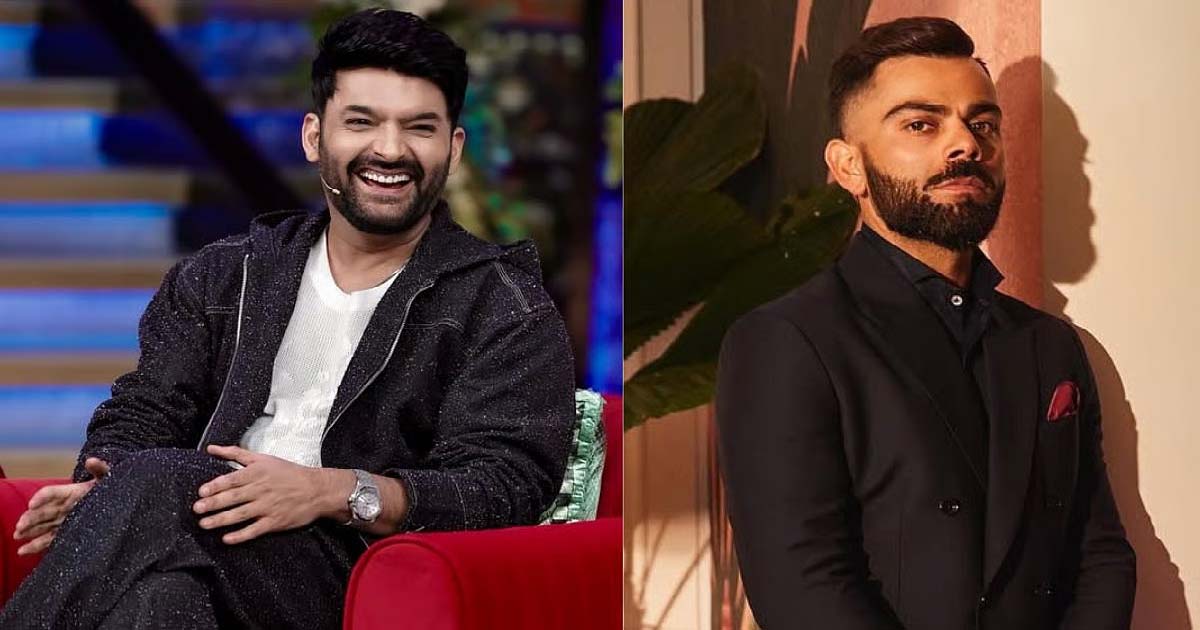
Will Indian cricketer Virat Kohli be Kapil Sharma’s next guest on The Great Indian Kapil Show? When a fan asked Kapil about inviting the cricketer to his show, he responded by saying “zaroor karunga.”
During an #AskKapil session, a fan wrote, “Virat Kohli ki aapke show paar kab invite kaar rahe ho ya aapki is bare me unse baat hui ya nahi sir (When are you inviting Virat Kohli to your show, or have you spoken to him about this or not, sir).” To this, Kapil replied, “Kabhi mila to zaroor request karunga unse (sic).”
Following Kapil’s reply, fans continued urging The Great Indian Kapil Show host to invite more Indian cricketers as well. One user even requested, “Dhoni aur Sachin Tendulkar ko Kab request karoge.”
Kapil Sharma will next be seen in Kis Kis Ko Pyaar Karoon 2, releasing in cinemas on December 12, 2025. The film stars Kapil in the lead role alongside Manjot Singh, Ayesha Khan, Hira Warina, Tridha Choudhary, Parul Gulati, Triptii Dimri, and Vipin Sharma.
Today, Kapil Sharma took some time out of his busy schedule to respond to fans’ questions. When one user asked, “Sir aapke show ka new season kab aa raha,” Kapil replied, “It’s starting on 20th December on @NetflixIndia.”
Another fan asked, “Kapil bhai aapne dhurandhar movie dekhi ky agr dekhi he to aapko movie kaise lagi ??” Kapil responded, “Busy in promotions, couldn’t watch it, but try to watch it tonight agar jaldi free ho gya to, mere bhai @RanveerOfficial ki movie hai, how can I miss it (sic).”
Season 4 of The Great Indian Kapil Show will premiere on December 20, 2025. As per reports, the first episode will feature Navjot Singh Sidhu and Harbhajan Singh as guests, appearing along with their wives. Besides them, the regular cast; Kapil, Sunil Grover, Krushna Abhishek, Kiku Sharda, Archana Puran Singh, and Rajiv Thakur, will also return to the show.
-
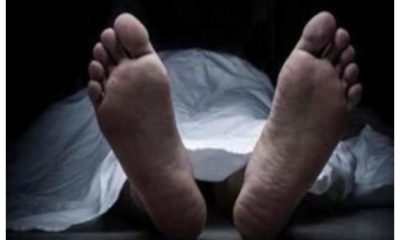
 Crime3 years ago
Crime3 years agoClass 10 student jumps to death in Jaipur
-
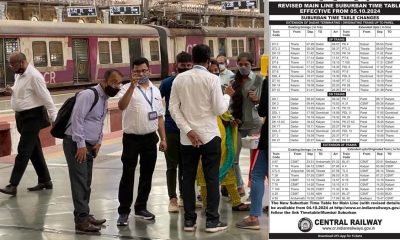
 Maharashtra1 year ago
Maharashtra1 year agoMumbai Local Train Update: Central Railway’s New Timetable Comes Into Effect; Check Full List Of Revised Timings & Stations
-
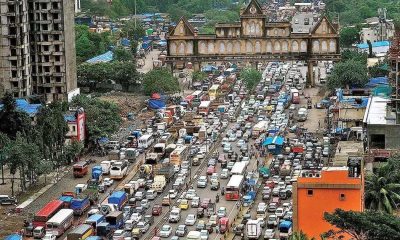
 Maharashtra1 year ago
Maharashtra1 year agoMumbai To Go Toll-Free Tonight! Maharashtra Govt Announces Complete Toll Waiver For Light Motor Vehicles At All 5 Entry Points Of City
-

 Maharashtra1 year ago
Maharashtra1 year agoFalse photo of Imtiaz Jaleel’s rally, exposing the fooling conspiracy
-

 National News1 year ago
National News1 year agoMinistry of Railways rolls out Special Drive 4.0 with focus on digitisation, cleanliness, inclusiveness and grievance redressal
-

 Maharashtra1 year ago
Maharashtra1 year agoMaharashtra Elections 2024: Mumbai Metro & BEST Services Extended Till Midnight On Voting Day
-

 National News1 year ago
National News1 year agoJ&K: 4 Jawans Killed, 28 Injured After Bus Carrying BSF Personnel For Poll Duty Falls Into Gorge In Budgam; Terrifying Visuals Surface
-

 Crime1 year ago
Crime1 year agoBaba Siddique Murder: Mumbai Police Unable To Get Lawrence Bishnoi Custody Due To Home Ministry Order, Says Report






















